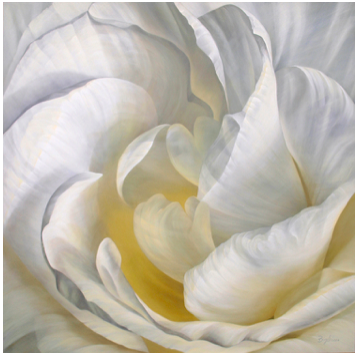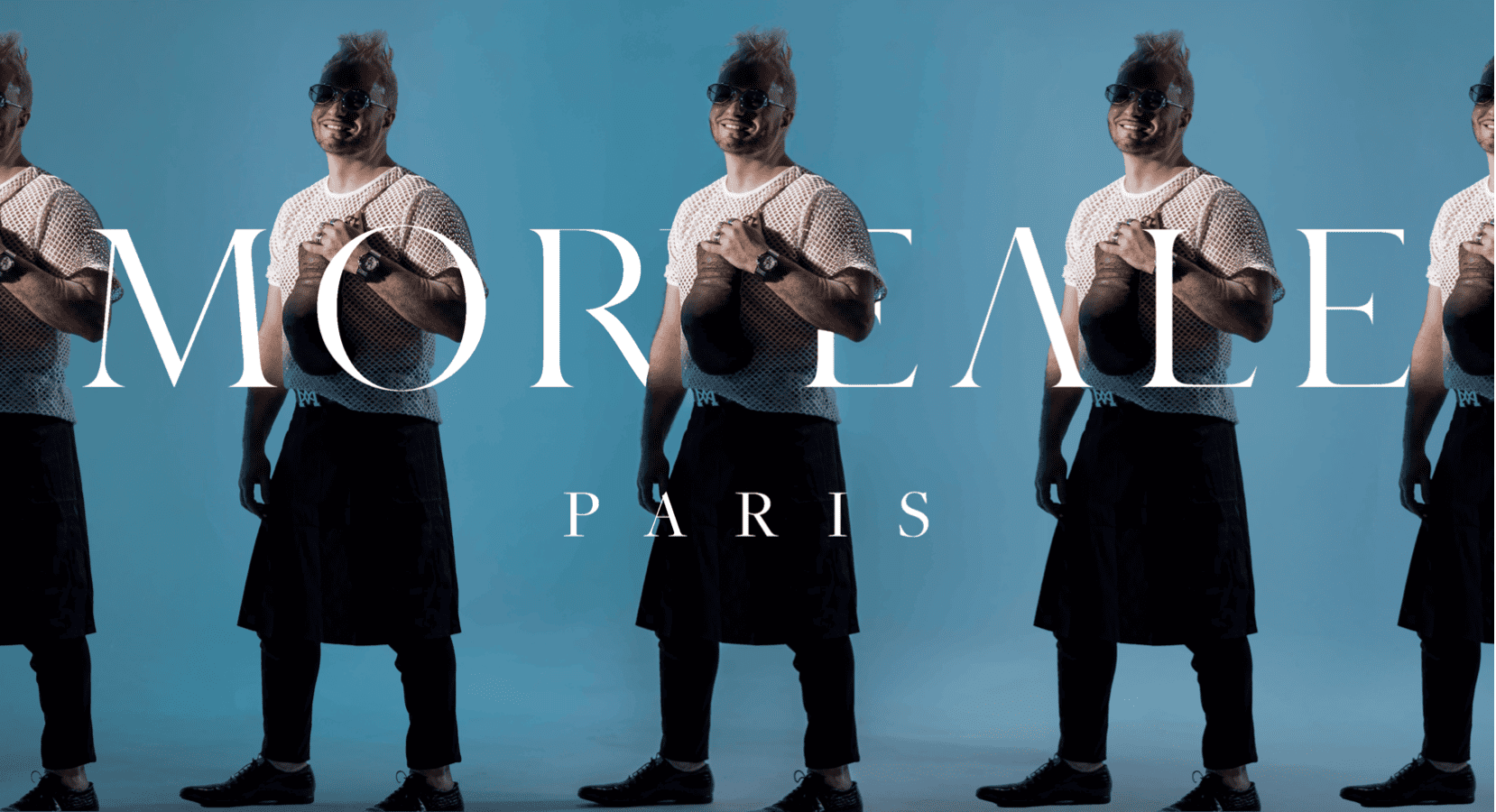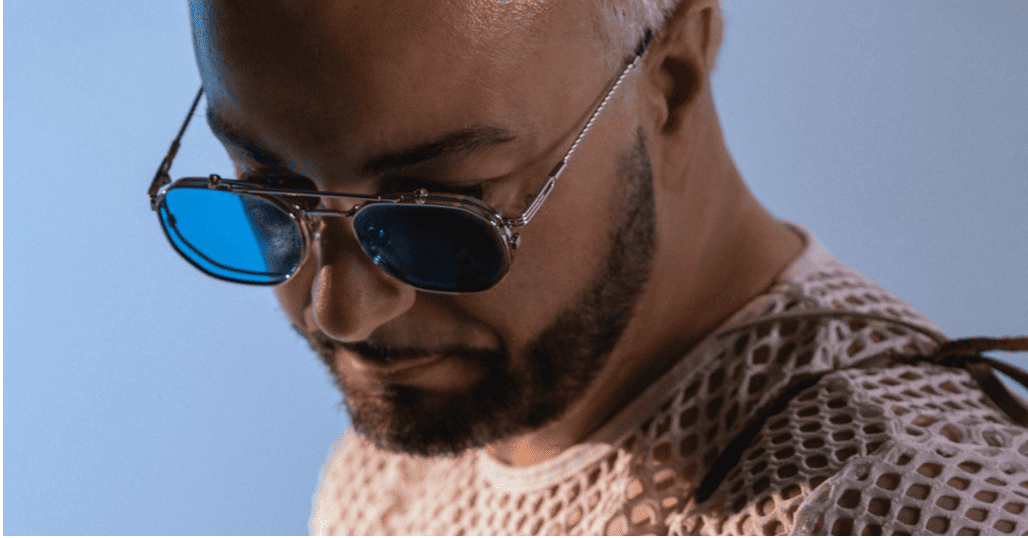Lifestyle
Deborah Bigeleisen -The Artist Changing the Genre of Floral Painting

Bigeleisen‘s Visions of Flowers will Dazzle Your Senses and Spark Your Imagination
Think of artists who paint flowers: do Monet’s water lilies come to mind, or Van Gogh’s sunflowers; perhaps Ono’s cherry blossoms, Renoir’s pink roses, or Klimt’s flower garden? Monet once proclaimed, “I owe having become a painter to flowers.”
Women have been tinkering with nature since Eve appeared in the garden of Eden. Put a woman in a verdant spot under a shining sun and you are guaranteed all sorts of surprises to bloom. Just look at Judith Leyster’s dimly lit vase of posies in her beautiful painting Flowers in a Vase in 1654, Rachel Ruysch’s exquisite bouquets of flowers in the Dutch Golden Age, and Suzanna Valadon’s mix of realism and abstraction in her1921 painting Vase of Flowers.
Why has it taken centuries for female floral artists to get the recognition they deserve? It was not until the early 1900’s that Georgia O’Keeffe, one of the most widely known female painters of flowers, rose to prominence. Whether you are admiring one of her iconic irises or being seduced by her Oriental poppies, you instantly know that the masterpiece belongs to the maverick painter.
Deborah Bigeleisen’s Brand of Floral Painting
Contemporary artist Deborah Bigeleisen’s paintings of flowers stand alone in the fine art arena. She has been referenced alongside O’Keefe most of her career, only because the two artists are associated with painting flowers. What they share are their passion for painting flowers and their pioneering spirit of seeing nature through a unique lens. Their vision and their techniques differ widely. O’Keefe is revered for her very stylized almost voyeuristic loosely suggestive paintings executed in a very ‘washed’ almost watercolor-like technique. Bigeleisen’s elegantly deceptive floral paintings hover on the cusp between realism and abstraction, with some series leaning more to one than the other. Through the application of numerous opaque and translucent layers of paint, the complexity of her technique draws the viewer into her world, one that is filled with energy, chaos, mystery, and beauty. Pictured below, from her Magical Realism series, Rhythm 8, oil on canvas, 127cm x 127cm (50” x 50”) ©2011
Art dealer Robert Miller commented that at first he thought Bigeleisen was channeling O’Keeffe. However, upon further reflection, to paraphrase “he came to realize that Bigeleisen has the absolute formula of perfect thought. She is accomplished in the idiom of the masters – noting that she personifies the perfect package: female – one who gives birth; focused – driven to explore the vast cavities of infinity; philosopher – one who tunes her work to the levels of understanding; and talent – that is technical without excuses.” Pictured below, from her Multiple Perspective series, Untitled No. 34, oil on canvas, 88.99cm x 177.8cm (35” x 70”) ©2015
Magical Realism
Bigeleisen has been captivated by natural forms since childhood. Echoing the personal philosophy of Rembrandt who “loved what he painted and only painted what he loved,” she continues to paint flowers. She says that flowers are in her DNA.
With a foundation in the painting techniques of the 17th century Dutch master artists, she applies similar principles to her painting practice. Her focus is on the organization of the space, the contrast of light and shadow to sculpt the forms, and the brushwork to give a voice to her subject’s energy and spirit. Through the application of more than ten translucent glazing layers, the use of subtle tonal transitions, and the constant play of warm hues against cool hues, the shadows have astonishing richness and depth, and the highlights are vibrant and luminous. Bigeleisen uses color as emotion. Because color is so subjective, she uses a carefully selected limited palette, often juxtaposing colors as they naturally appear, to deliberately challenge the viewer’s perception and imagination. Pictured below, from her Magical Realism series, Energy 5, oil on canvas, 91.44cm x 142.24cm (36” x 56”) ©2015
A Foundation in Fractals
Bigeleisen’s work demonstrates a deep interest in searching out the connective tissue between human and environmental anatomies; a search that sparks an enquiry as to how people establish a deeply intimate relationship with nature. She credits her introduction to the mathematic principles of fractals for transforming her artistic vision and changing the direction and force of her work. Still using a single image of a flower as her inspiration, she captures the fleeting effect of natural phenomena and immortalizes the transitory nature of life. Peeling away the layers and magnifying the image to its core, to the point of pure abstraction, she exposes the depth of her subject’s anatomy, its dynamism, its turbulence, and its unpredictability. Her subject is no longer simply a flower; it is a dynamic system existing in a chaotic universe filled with energy, turbulence, mystery, and beauty.
Bigeleisen’s goal with the larger-than-life explorations into the depths and soul of a flower is not only to seduce the viewer into the multitude of its complexities but also to shift the dialogue inward by asking the viewer to put down their devices, to take the time to look at the world around them for longer than a nano-second, and to see and question more than meets the eye. Pictured below, from her Kaleidoscope series, Renaissance, acrylic on canvas, 142.24cm x 106.68cm (56” x 42”) ©2020
A Unique Vision
Bigeleisen’s work is both a fresh perspective of and a deep insight into the familiar. Her work probes the bridge between beauty and science, order and chaos. One art journalist describes her work perfectly: “It brings a unique vision to the genre of floral painting to embody a contemporary world.” Bigeleisen paints introspectively, asking not only the viewers to engage with the bursting blooms, but also examines her own questions regarding the seemingly indestructible bond between human activity and the cycles of nature. Pictured above, from her Dreamscape series, Bridal Veil Falls, acrylic on canvas, 152.4cm x 137.16cm (60” x 54”) ©2021
Deborah Bigeleisen is an award-winning artist whose paintings enhance corporate and private collections worldwide and are represented by galleries across the United States. Her work has been included in numerous museum exhibitions and has been published widely. Bigeleisen paints from her Palm Beach studio sprouting joy and wonders with each brushstroke and new canvas.
Lifestyle
Jean-Pierre Morreale: The Perfumer Behind Bespoke Creations for Royals and Celebrities

In the exclusive world of haute perfumery, where luxury and discretion go hand in hand, Jean- Pierre Morreale stands as a figure shrouded in mystery. As the genius behind Morreale Paris, Morreale has earned a reputation not only for his exquisite fragrances but for his secretive nature, which has only enhanced his allure among the world’s elite. While his work speaks for itself—crafting fragrances that embody elegance and opulence—it is his connections with royalty and global celebrities that have cemented his place as a master of bespoke scent creation.
A Life of Mystery and Exclusivity
Jean-Pierre Morreale’s name is synonymous with luxury, but little is known about the man himself. Despite being at the helm of one of the world’s most prestigious fragrance houses, he remains elusive, allowing his work to take center stage. Morreale’s life and career are defined by discretion—a quality that is highly valued among his clientele, which includes some of the most powerful and influential figures in the world.
Morreale’s secretive nature is not a marketing ploy but a way of life. He rarely gives interviews, avoids the spotlight, and prefers to let his fragrances do the talking. This air of mystery has only fueled the fascination surrounding him, with rumors of private meetings with kings, queens, and Hollywood’s biggest stars swirling around his brand. Those who know him describe a man deeply committed to his craft, who values privacy above all else.
The Perfumer to European Royalty
Jean-Pierre Morreale’s aristocratic heritage has always played a significant role in his career, and it is this connection to European nobility that has given him access to some of the world’s most exclusive circles. Morreale is a trusted confidant of royal families across Europe, with a clientele that includes members of the Italian, French, and Middle Eastern royalty. These relationships, forged over years of mutual respect and admiration, are built on trust and discretion—qualities that Morreale embodies in his work.

For many royals, fragrance is a deeply personal part of their identity, and they turn to Morreale for bespoke creations that reflect their status, personality, and history. His private consultations with these figures are shrouded in secrecy, with few details ever reaching the public. What is known, however, is that Morreale’s bespoke fragrances are as unique as the individuals who wear them, crafted from the rarest and finest ingredients in the world. His creations often become the signature scents of the royals he serves, worn only by them, ensuring that they remain one-of-a-kind masterpieces.
The Go-To Perfumer for Celebrities
In addition to his royal clientele, Jean-Pierre Morreale is also a favorite among the world’s biggest celebrities. From Hollywood A-listers to music legends, many of the entertainment industry’s most famous names seek out Morreale’s expertise when it comes to creating a bespoke fragrance. These celebrities, like his royal clients, value his discretion and trust him to create scents that capture their essence without the intrusion of the public eye.
Morreale’s clients often reach out to him privately, whether it be for a custom fragrance to mark a major career milestone, a personal scent for a red carpet event, or even a gift for a loved one. His ability to understand the emotional and psychological aspects of scent creation makes him the ideal perfumer for those who wish to wear something truly unique. For many, the process of working with Morreale is a highly personal experience—one that often involves intimate conversations about memories, emotions, and desires.
The Art of Bespoke Perfume Creation
Jean-Pierre Morreale’s approach to bespoke fragrance creation is a blend of art, science, and intuition. His process is meticulous and deeply personalized, starting with a private consultation, often conducted behind closed doors in the most luxurious of settings—whether in royal palaces, private estates, or in his secretive Parisian atelier. Morreale takes the time to get to know his clients, understanding their personal history, emotional connections, and even the cultural significance of certain scents.
Every fragrance he creates is a unique reflection of the individual, composed of rare and often exotic ingredients that he sources from around the world. For Morreale, no detail is too small, and his creations are known for their complexity and depth, with each note telling part of a larger, personalized story. These scents are not just perfumes but works of art, often packaged in custom-designed, handcrafted bottles, making them as visually stunning as they are olfactorily captivating.
Once the fragrance is complete, it is delivered to the client in the utmost secrecy. This level of exclusivity is part of the allure of a Jean-Pierre Morreale creation; owning a bespoke fragrance from Morreale Paris is akin to possessing a rare piece of art, one that can never be replicated.

A Legacy of Discretion and Luxury
Jean-Pierre Morreale’s dedication to privacy has only enhanced his status as one of the most sought-after perfumers in the world. While other fragrance houses may seek publicity, Morreale has built his brand on a foundation of discretion, catering to those who value their privacy as much as their luxury. His relationships with his clients—whether royals or celebrities—are built on trust, and it is this trust that has allowed him to continue creating bespoke fragrances for the most influential people on the planet.
Despite his global success, Morreale remains as discreet as ever, allowing his work to speak for itself. His clients, from European kings and queens to Hollywood stars, know that when they commission a fragrance from Jean-Pierre Morreale, they are not only receiving a world-class creation but also the assurance that their privacy will be respected.
Jean-Pierre Morreale’s combination of artistry, exclusivity, and discretion has made him the master perfumer of choice for royalty and celebrities alike. His secretive nature, far from being a hindrance, has only added to his mystique and elevated his brand to legendary status. In a world where privacy is often a luxury, Morreale’s ability to create bespoke fragrances in complete secrecy has earned him the loyalty of some of the most powerful and famous people in the world. For those fortunate enough to work with him, a fragrance by Jean-Pierre Morreale is not just a scent—it is a timeless, personal masterpiece, created by a man who values the art of discretion as much as the art of perfumery.
-

 Tech4 years ago
Tech4 years agoEffuel Reviews (2021) – Effuel ECO OBD2 Saves Fuel, and Reduce Gas Cost? Effuel Customer Reviews
-

 Tech5 years ago
Tech5 years agoBosch Power Tools India Launches ‘Cordless Matlab Bosch’ Campaign to Demonstrate the Power of Cordless
-

 Lifestyle5 years ago
Lifestyle5 years agoCatholic Cases App brings Church’s Moral Teachings to Androids and iPhones
-

 Lifestyle4 years ago
Lifestyle4 years agoEast Side Hype x Billionaire Boys Club. Hottest New Streetwear Releases in Utah.
-

 Tech6 years ago
Tech6 years agoCloud Buyers & Investors to Profit in the Future
-

 Lifestyle4 years ago
Lifestyle4 years agoThe Midas of Cosmetic Dermatology: Dr. Simon Ourian
-

 Health5 years ago
Health5 years agoCBDistillery Review: Is it a scam?
-

 Entertainment5 years ago
Entertainment5 years agoAvengers Endgame now Available on 123Movies for Download & Streaming for Free
